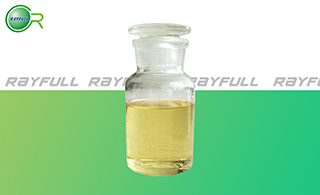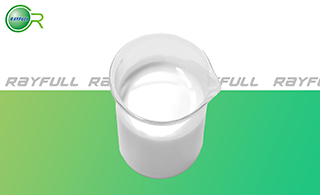Lufenuron
    Кӯтэле Кӯтэле
Introduction: Lufenuron, a benzoylurea pesticide, inhibits the production of chitin in insects. Without chitin, a larval flea will never develop a hard outer shell (exoskeleton). With its inner organs exposed to air, the insect dies from dehydration soon after hatching or molting (shedding its old, smaller shell). Lufenuron is also used to fight fungal infections, since fungus cell walls are about one third chitin. Lufenuron is also sold as an agricultural pesticide for use against lepidopterans, eriophid mites, and western flower thrips. It is an effective antifungal in plants.
Common name: Lufenuron
Another name: Fluphenacur; N-((2,5-Dichloro-4-(1,1,2,3,3,3-hexafluoropropoxy) phenyl)carbamoyl)-2,6-difluorobenzamide; CHEBI:39384; PWPJGUXAGUPAHP- UHFFFAOYSA-N; etc.
Chemical name:
(RS)-1-[2,5-dichloro-4-(1,1,2,3,3,3-hexafluoropropoxy)phenyl]-3-(2,6-difluorobenzoyl)urea
Empirical formula: C17H8Cl2F8N2O3
Structural formula:

Mol. Weight: 511.16 g/mol
CAS No.: 103055-07-8
Specifications
Leading Lufenuron supplier
Lufenuron 98% TC
Lufenuron 10% SC
Lufenuron 50 g/L EC
Lufenuron 5% EC
Packing:
BULK PACKING
Powder: 25kg/Bag, 25kg/Drum, 50kg/Drum etc.
Liquid: 200L/Drum, 20L/Drum, 10L/Drum etc.
SMALL PACKING
Powder: 1kg/Alu bag, 500g/Alu bag, 200g/Alu bag, 100g/Alu bag, 50g/Alu bag, 15g/Alu bag etc.
Liquid: 5L/Drum, 1L/Bottle, 500ml/Bottle, 250ml/Bottle, 100ml/Bottle, 50ml/Bottle etc.
Customerized packing label
Lufenuron FAO standard
Professional registration
HAZARDS IDENTIFICATION
Hazard statement(s)
H317 (100%): May cause an allergic skin reaction.
H400 (100%): Very toxic to aquatic life.
H410 (100%): Very toxic to aquatic life with long lasting effects.
Precautionary statement(s)
P261: Avoid breathing dust/fume/gas/mist/vapors/spray.
P272: Contaminated work clothing should not be allowed out of the workplace.
P273: Avoid release to the environment.
P280: Wear protective gloves/protective clothing/eye protection/face protection.
P302+P352: IF ON SKIN: wash with plenty of water.
P321: Specific treatment (see ... on this label).
P333+P313: IF SKIN irritation or rash occurs: Get medical advice/attention.
P363: Wash contaminated clothing before reuse.
P391: Collect spillage.
P501: Dispose of contents/container to.
Supplemental Hazard Statements: none.
MAMMALIAN TOXICOLOGY
Acute toxicity: 1) Acute oral LD50 for rats is >2000 mg/kg 2) Acute dermal LD50 for rats is >2000 mg/kg. 3) Acute inhalation toxicity LC50 (4 h) for rats is >2.35 mg/L. 4) Skin irritation: Slightly irritating to skin (rabbits). 5) Eye irritation: Slightly irritating to eyes (rabbits). 6) Skin sensitization for guinea pig: Sensitizing (Magnusson and Kligman maximization test).
NOEL: (2 y) for rats is 1.93 mg/kg/day, (18 m) for mice is 2.12 mg/kg/day, (1 y) for dogs is 7.02 mg/kg/day. Other Not carcinogenic. Not genotoxic.
ADI (JMPR) 0-0.02 mg/kg b.w. [2015]
Classification:
WHO Classification: NL (Not listed)
EC Risk Classification: Xn - Harmful: R43, R48/22; N - Dangerous for the environment: R50, R53
US EPA Classification (formulation): Not available.
ECOTOXICOLOGY
Effect on birds: Acute oral LD50 for Mallard is 2000 mg/kg. Effect on fish: Acute LC50 (96 h) for Bluegill sunfish is >29 mg/l. Effects on aquatic invertebrates: Acute EC50 (48 h) for Daphnia magna is 0.013 mg/l. Effects on algae: Acute 72 hour EC50 for Pseudokirchneriella subcapitata is 8.8 mg/l. Effects on bees: Contact acute 48 hour LD50 is >200 ҰМg/bee, oral acute 48 hour LD50 is >197 ҰМg/bee. Effects on earthworms: Acute 14 day LC50 is >500 mg/kg.
ENVIRONMENTAL FATE
Animals Major route of elimination was via faeces, with very little degradation. Plants No metabolites occurred in significant amounts in the investigated target crops (cotton, tomatoes). Soil/Environment Lufenuron was rapidly degraded in biologically active soils under aerobic conditions. DT50 13-20 d. Lufenuron showed a very strong adsorption onto soil particles: Koc (mean value) 38 mg/g o.c.
Usage: Lufenuron was introduced by Ciba-Geigy (now Syngenta AG) in 1990. It is an insect growth regulator used to control biting and sucking insects. Also has some veterinary applications.
Application: Biochemistry Inhibits chitin synthesis. Mode of action Acts mostly by ingestion; larvae are unable to moult, and also cease feeding. Uses Insect growth regulator for control of Lepidoptera and Coleoptera larvae on cotton, maize and vegetables; and citrus whitefly and rust mites on citrus fruit, at 10-50 g/ha. Also for the prevention and control of flea infestations on pets.
| 






